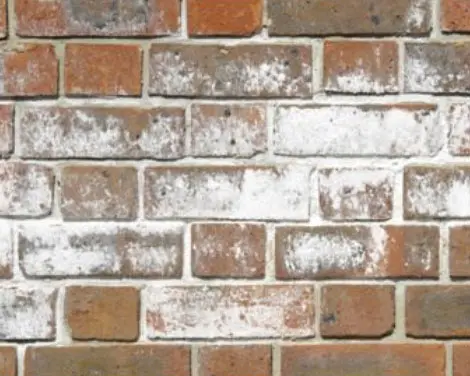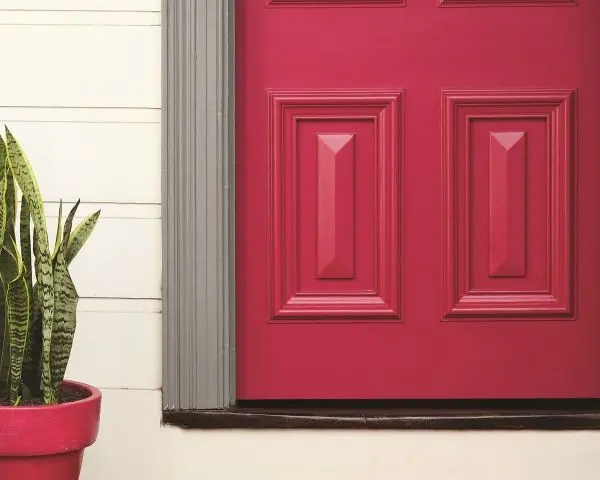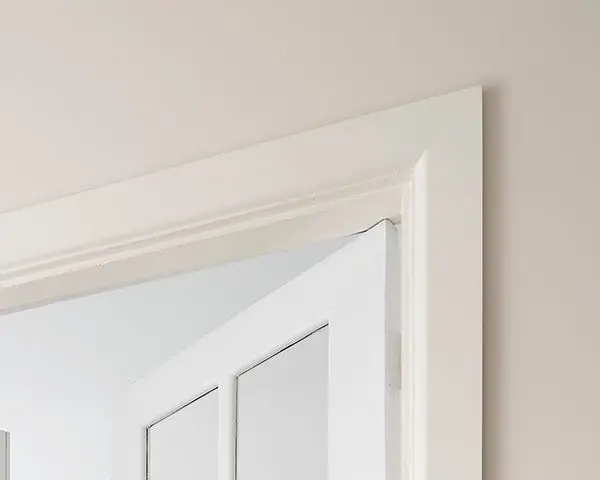Find out everything you need to know about paint adhesion Loss by downloading the Dulux paint adhesion loss technial advice brochure.
What is paint adhesion loss?
“Adhesion” is defined as the sum total of the forces of attachment between a dry paint film and its substrate (Ref: AS/NZS 2310: Glossary of paint and painting terms).
Loss of adhesion can be depicted or described in many different ways. A progressive loss of adhesion can occur as the degradation intensifies through the following stages (also as defined by AS/NZS 2310).
Checking – breaks in the surface of a paint film, which do not visually show the underlying surface when the film is being viewed under magnification of 10X. (Refer to AS 1580.481.1.7 for assessment of checking).
Crazing – the formation of minute criss-cross cracks on the surface of a paint film. Crazing resembles ‘checking’ but the cracks are deeper / broader and they exhibit a polygonal pattern resembling crazy paving.
Cracking – the formation of defined breaks in the paint film which actually expose the substrate.
Blistering – the convex deformation of the paint film arising from local detachment of one or more of the constituent coats or layers.
Peeling – localized loss of adhesion between the paint film and the substrate or partial detachment from the substrate of areas of the paint film due to loss of adhesion.
Flaking – the complete detachment of pieces of the paint film from the underlying surface or substrate.
Why does paint lose adhesion?
Paint adhesion loss can occur on either interior or exterior surfaces.
A paint coating will have great difficulty adhering to the substrate (new or previously painted, interior or exterior) if any surface contaminants such as dirt, dust, oil, grease, mould, mildew, algae, salt, or other loose or powdery substance is present on the surface. Even high quality, high performance products can fail to adhere adequately to a contaminated surface.
If the substrate itself is unstable, underbound, powdery or if any previous paint coatings have deteriorated to an extent that they have become unsound or showing signs of failure, then it is totally unreasonable to expect that the overall coating system will remain firmly adherent, simply by applying a new paint coating over the top.
A painted exterior surface has to withstand ongoing climatic and environmental effects. Changes in air and surface temperature, humidity and moisture, movement and degradation of substrates, attack by oxidation and exposure to ultraviolet radiation, chemical attack, degradation due to mould and algae growth and other external stresses generally determine how long a paint film will last.
Since paint coatings are primarily used to protect substrates from all these external influences, it is unreasonable to expect that a paint coating will last forever.
Whilst every paint coating system does have a limited life, it is possible to maximise long term performance by implementing a periodic care and maintenance program.
The only circumstance, by which a paint coating can lose adhesion from a substrate without an external influence interfering with its adhesion, is if the paint coating is incompatible with the substrate. For example, oil-based alkyd paint would encounter premature adhesion loss when applied onto a masonry substrate due to the expected reaction between the oil in the paint and the alkalinity in the substrate.
This incompatibility is not a failure of the paint itself but rather a failure of awareness.
It is therefore imperative that the paint manufacturers’ recommendations regarding product suitability over specific substrates be carefully observed and adhered to.It is also important to recognise that failures of adhesion are commonly found to be associated with poor quality paint. This is due to the low quality and/or quantity of binder (resin) used in cheap paints in order to reduce their cost. The “high cost of cheap paint” should be carefully taken into account.
How does it occur?
A coating failure can be expected when the adhesion or cohesion of a layer within the paint it occur coating system, or in the substrate itself, is overcome by one or more external forces. Some forces (e.g. moisture ingress) act more quickly than others.
The intensity of the external forces that are needed to produce a failure will be lessened if the system of coating + substrate includes any of the following inadequate conditions:
Unsound or incoherent substrate e.g. weathered timber, weak or underbound masonry or plaster.
Lack of preparation of the substrate e.g. leaving contaminants or loose material on the surface, excessively high gloss, excessively smooth surface.
Prepcoat (primer, sealer or undercoat) missing, of poor quality or incorrect type for this substrate.
Lack of maintenance of existing coating e.g. deterioration allowed to proceed to the point where film integrity is lost and the substrate becomes exposed.
Lack of preparation of existing painted surfaces prior to repainting eg. leaving dirt, mould, salt or other contaminants on the surface, painting over chalky or deteriorated (unsound) paint, painting over excessively high gloss surfaces without sanding to degloss and provide a mechanical key for subsequent adhesion.
All or any of these undesirable conditions will compromise the paint coatings ability to withstand the external forces that it is subjected to on a day-to-day basis.
Solution
Structures Paint films that are blistering, cracking, flaking or peeling should be completely removed.
Isolated instances could actually be a genuine indication of a wider adhesion problem therefore systematic adhesion checks of the entire paint film should be undertaken, (in accordance with AS/NZS1580.408 parts 2, 4 or 5), to determine the overall integrity of all the layers of the coating system.
In areas where poor adhesion is observed, the partial or even complete removal of the existing coatings will be necessary to provide maximum life to the new coating system.
Irrespective of whether the failure is due to external forces or anything else, the integrity of the paint film has been compromised; hence rectification will always include full removal of all material that is ‘unsound’ or potentially unsound.
Bare or previously painted surfaces need to be sound, clean, dry, chemically stable, and free of any exudation, efflorescence or biological growths such as mould, mildew or algae. Glossy surfaces should be ‘dulled-off’ by lightly sanding to provide a good mechanical key for subsequent adhesion of the next paint coating.
Full repainting with coating systems appropriate to each substrate should be carried out without delay and always before any further deterioration or surface contamination occurs.
Prevention
Deep hue colours traditionally breakdown more quickly and have a shorter life expectancy to first maintenance, than lighter colours within the same environment. As a result, choice of colour can play a very important part in how long it takes for the paint coating system to deteriorate.
Over time, as the painted surface ages, it will become less flexible and less capable of withstanding the stress and constant movement (expansion and contraction) in the substrate. The destructive result is loss of adhesion through crazing, cracking, flaking, peeling or blistering of the paint system.
Applying darker colours over previously painted exterior surfaces can generate more heat in the substrate, which in turn causes any moisture present to force its way out, any way it can. Often the moisture travels via capillary breaks in the old weathered paint film to the surface but cannot escape quickly enough through the new paint film. The unfortunate result is blistering of the paint film back to bare substrate, requiring complete removal of all paint coatings.
More heat also means more severe expansion and contraction of the substrate thus more stress imposed on the paint coating system.
References
A detailed explanation of the painting terms used in this document can be found in Australian Standard AS/NZS 2310 “Glossary of paint and painting terms.
Information on the methods for testing paint adhesion can be found in Australian Standard AS/ NZS 1580.408 Pt. 2, 4 or 5 “Paints and Related Materials - Method of Test – Adhesion”
Detailed information on the removal of paint from surfaces in poor condition can be found in AS/ NZS 2311 Section 7.5 “Guide to the Painting of Buildings”
Further information on this topic can also be obtained through the New Zealand Paint Manufacturers Association (NZPMA).
Phone: (09) 910-0141 or Email: nzpma@workz4u.co.nz
More paint problem solutions
Efflorescence is the deposit of crusty white mineral salts that appear on a masonry surface such as concrete, render, brick or mortar.
Discover how to touch up a small area of a newly painted surface to conceal repairs to minor damage or to cover up small surface defects.
Discover the differences between water-based and oil-based enamel paints.
All water-based paints undergo a “drying process” involving two distinct phases, evaporation and coalescence.
Get detailed information about the physical and chemical properties of our products.
Advice for those challenges that arise in your busy and varied days.
Browse Dulux specifications, product datasheets, substrate information and safety data sheets.



